 The heavy barrel Remington Model 700 reflects a tradition of powerful, long range reaching and very accurate rifles. Its worth can be found in the Marine Corps 1966 – present M40 and the Army’s 1988 – present M24 sniper systems and in the hands of hunters and competitive shooters around the world. My personal ownership over the years has included five 26″ heavy barrel Model 700s with H-S Precision stocks: 338 Lapua Mag, 300 Ultra Mag x 2, 264 Winchester Mag, and a 220 Swift. All excellent rifles with exceptional accuracy.
The heavy barrel Remington Model 700 reflects a tradition of powerful, long range reaching and very accurate rifles. Its worth can be found in the Marine Corps 1966 – present M40 and the Army’s 1988 – present M24 sniper systems and in the hands of hunters and competitive shooters around the world. My personal ownership over the years has included five 26″ heavy barrel Model 700s with H-S Precision stocks: 338 Lapua Mag, 300 Ultra Mag x 2, 264 Winchester Mag, and a 220 Swift. All excellent rifles with exceptional accuracy.
The Remington’s Model 700 Stainless 5-R Threaded Barrel is a bit of a departure from the other Remington rifles previously indicated. Chambered for the 300 Winchester Magnum, the subject rifle has a 24″ barrel and a threaded muzzle that will be matched up with a Jaeger 30 hunting silencer that is rated for use with the 300 Winchester Magnum.
The barrel is unfluted, the barreled action is bare stainless, the bolt handle terminates with a conventional bolt knob, and the aluminum framed H-S Precision stock is black with dark green spider webbing.
Essentially the same rifle with a non-threaded muzzle is also available as the Remington Model 700 Stainless 5-R #85505. For folks who like a more tactical look and feel, the Remington Model 700 5-R Stainless Threaded Gen 2, #85197, has a six flute barrel, tactical bolt knob, black Cerakote finish, and a black webbing on sand colored H-S Precision Stock. With the model feature exceptions as noted, all share common specifications.
| Remington Model 700 Stainless 5-R Threaded |
|
| Manufacturer | Remington Ilion, NY |
| Item # | 85508 |
| Type | Bolt Action |
| Caliber | 300 Winchester Magnum |
| Mag Capacity | 3 |
| Barrel Length | 24″ |
| Rifling | 5-R 1:10″ |
| Weight | 8.0 Lbs 8 Oz |
| Overall Length | 43 3/4″ |
| Stock | H-S Precision Composite |
| Hardware | Stainless Steel |
| Length of Pull | 13 3/8″ |
| Drop at comb | 1 1/4″ |
| Drop at heel | 1 1/2″ |
| Sights | None |
| Scope | Drilled and Tapped |
| Trigger – Adjustable |
3.0 to 5.0 Lbs |
| Safety | Thumb 2 Position |
| MSRP | $1,150 |
While the Model 700 Stainless R-5 is not a lightweight, it is by no means a heavyweight; approximately 1 pound more than a standard weight sporter, about a pound less than heavyweight target rifles. Is it too much to carry routinely? The 1903 Springfield, M1 Garand and M-14 our military carried as primary weapons from World War I to Vietnam all weighed a pound+ more than the subject rifle. I carried an 8.5 lb maple stocked sporter all over the Black Hills and Prairies of South Dakota for some years, but I was younger, stronger and I had a lot more hair in those days.
Would I grab a Model 700 Stainless R-5 to hunt in the surrounding Maine woodlands with 40 yard shooting distances and a tree hiding behind every tree… and there are a lot of trees in Maine? Probably not. My local area Maine hunting rifles have 16″ to 18″ barrels and weigh 6 pounds or less. A good example where the Model 700 Stainless 5-R would fit with Maine might be hunting agricultural areas with dormant fields or wooded areas with firebreaks. In fact, the Remington would fit into any hunting situation where shots are over 100 yards, or at a competitive shooting event, or for use on good shooting days at the range.
Good looking rifle and, yes, that is a consideration
Aesthetic appeal is quite subjective, but the combination of satin stainless, jeweled bolt and H-S Precision stock. I don’t actually subscribe to message board terrorists, who gain power by convincing a dozen nitwits to follow their lead in attacking industry companies and personalities. In my experience, Remington rifles stocked with H-S composite stocks with embedded aluminum frame are durable, consistent in shot to shot placement and they have a good form for shooters.

Lots of manufactures label injection molded stock or mass produced foam over fiberglass stocks as “composite”. H-S composite stocks are made one at a time. The stock begins as a CNC machines aluminum block, tailored to the action it will hold. The bedding block is placed in a mold, with the sides of the mold hand laminated with Kevlar, fiberglass and carbon fiber fabric, before the mold is injected with dense polyurethane foam to form the stock’s final form. The composite stock is then hand finished. I’ve never had one break, separate or shift point of impact shot to shot, either factory firearm or shop built custom.
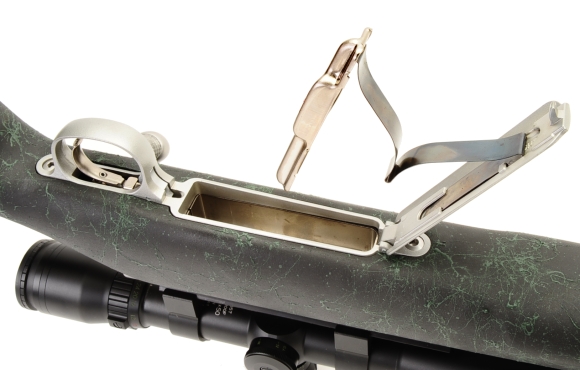
The rifle’s bottom metal is aluminum and finished to match the stainless barreled action. The follower and magazine box are stainless steel. The Remington has a two position safety, so it is easy to cycle the action and empty the mag when done shooting for the day. However, it is even easier to release the floorplate, dump ammo and cycle the bolt once to chamber check.
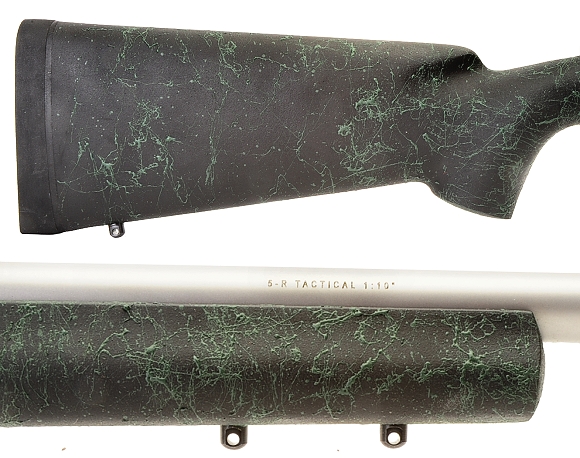
The resilient Remington recoil pad is extremely comfortable, if somewhat less so when the trigger is pulled on a live 300 Winchester Mag round. The straight comb lends good support to the face, while positioning the eye in alignment with a scope. The pistol grip palm swell is hand filling, the forearm is broad and flat bottomed, combining for a very steady hold. Studs are included for sling and/or bipod mounting.
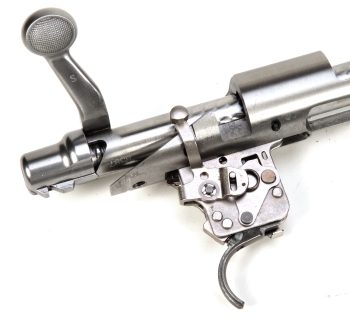
The Remington X-Mark Pro trigger is a good one, pull adjustable from 3 lbs to 5 lbs. For me, the range is the most useful, especially when release is crisp and creep free. The two position safety is sufficient with a choice of confidently on or off, quiet operation and best location.
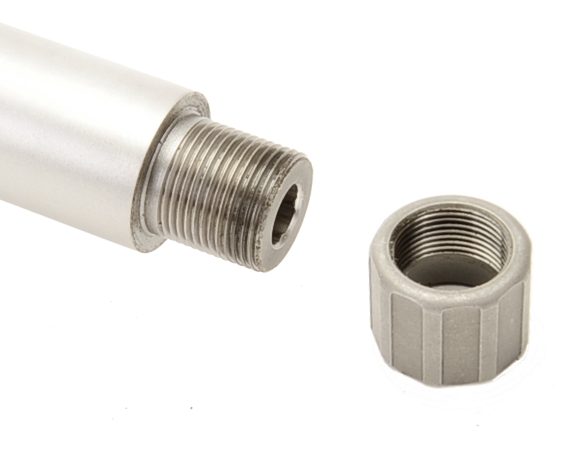
The heavyweight barrel terminates in 5/8×24 threads and removable thread protector, a standard size for muzzle brakes, silencers and other similar devices. While shooting the Remington, several types of brakes were tried as well as an Advanced Armament Corporation Jaeger 30 hunting silencer. Lots of progress on the recoil dampening front.
No, probably not a subtle rifle, but an effective combination. After years of working with a variety of brakes that seemed to amplify report, it is nice to take the edge off of a 300 Winchester Magnum with a moderately priced silencer made for the hunting season.
Shortened Winchester Belted Magnums… the series
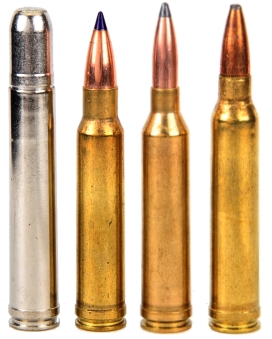 Left to right – 458 Winchester Magnum, 338 Winchester Magnum, 264 Winchester Magnum, and 300 Winchester Magnum. All cartridges based on the parent 375 Holland & Holland Magnum case, shortened, shoulders sharpened and body taper minimized.
Left to right – 458 Winchester Magnum, 338 Winchester Magnum, 264 Winchester Magnum, and 300 Winchester Magnum. All cartridges based on the parent 375 Holland & Holland Magnum case, shortened, shoulders sharpened and body taper minimized.
Following the 1956 458 Winchester Magnum introduction, came two 1958 cartridge introductions, the 338 Winchester Magnum and the 264 Winchester Magnum. The last in the series of 30-06 length action belted cartridge was the 300 Winchester Magnum that joined the line up in 1963, a replacement for the lackluster, but once popular 300 H&H.
I’ve had a good amount of experience with all, each doing well in its own right is intended applications, but the two standouts for North America are the 338 Winchester Magnum and 300 Winchester Magnum, with the 300 Mag taking the award for most useful cartridge out of this series. It has found a home in both civilian and military applications, offering a significant improvement over the 30-06 Springfield, but not the recoil, muzzle blast and rifling eradicating properties of of the larger, full length 30 caliber magnums.
Can you decode the secret message from the picture below?
To place the 300 Winchester Magnum’s popularity into a broader context, there are 80 factory loads for the 300 Win Mag. Of the top 260 cartridges available in factory ammo form, only three others have a greater number of factory loads: 223 Remington, 308 Winchester and 30-06 Springfield.
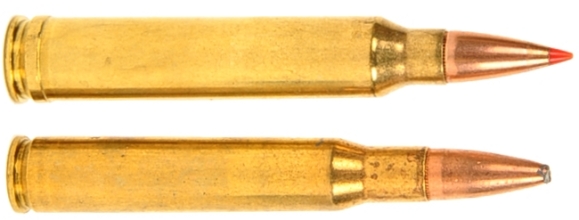
Of course, the 300 Winchester Magnum tops the performance of the 30-06 Springfield. Yes, I suppose it could be the 300 Magnum wins by a nose, or… OK, I’ll stop. In a more objective sense, this is what each has to offer *-
| 300 Winchester Magnum 180 Grain | |||||||
| Near-Zero – Yards | 28 | Mid Range – Yards. | 150 | ||||
| Far-Zero – Yards | 267 | Max Ordinate – Inches | +3.0 | ||||
| Point Blank -Yards. | 284 | ||||||
| Hornady Superformance Ammunition | ||||||||||||
| Yards | 0 | 50 | 100 | 150 | 200 | 250 | 300 | 350 | 400 | 450 | 500 | |
| Velocity – fps | 3130 | 3042 | 2956 | 2870 | 2787 | 2705 | 2624 | 2545 | 2468 | 2391 | 2317 | |
| Energy – ft.-lbs. | 3915 | 3698 | 3491 | 3293 | 3104 | 2924 | 2752 | 2589 | 2433 | 2285 | 2144 | |
| Momentum – lbs-sec | 80 | 78 | 76 | 74 | 72 | 70 | 67 | 65 | 63 | 61 | 60 | |
| Path – in. | -1.50 | 0.96 | 2.47 | 3.00 | 2.47 | 0.81 | -2.02 | -6.12 | -11.57 | -18.44 | -26.82 | |
| Drift – in. | 0.00 | 0.00 | 0.00 | 0.00 | 0.00 | 0.00 | 0.00 | 0.00 | 0.00 | 0.00 | 0.00 | |
| Time Of Flight – sec. | 0.00 | 0.05 | 0.10 | 0.15 | 0.20 | 0.26 | 0.31 | 0.37 | 0.43 | 0.49 | 0.56 | |
| 30-06 Springfield 180 Grain | |||||||
| Near-Zero – Yards | 25 | Mid Range – Yards | 136 | ||||
| Far-Zero – Yards | 241 | Max Ordinate – in. | +3.0 | ||||
| Point Blank -Yards | 257 | ||||||
| Hornady Superformance Ammunition | ||||||||||||
| Yards | 0 | 50 | 100 | 150 | 200 | 250 | 300 | 350 | 400 | 450 | 500 | |
| Velocity – fps | 2820 | 2737 | 2656 | 2576 | 2498 | 2421 | 2346 | 2272 | 2200 | 2128 | 2059 | |
| Energy – ft.-lbs. | 3178 | 2994 | 2819 | 2653 | 2494 | 2343 | 2199 | 2063 | 1933 | 1810 | 1694 | |
| Momentum – lbs-sec | 73 | 70 | 68 | 66 | 64 | 62 | 60 | 58 | 57 | 55 | 53 | |
| Path – in. | -1.50 | 1.17 | 2.67 | 2.95 | 1.91 | -0.52 | -4.43 | -9.91 | -17.09 | -26.05 | -36.94 | |
| Drift – in. | 0.00 | 0.00 | 0.00 | 0.00 | 0.00 | 0.00 | 0.00 | 0.00 | 0.00 | 0.00 | 0.00 | |
| Time Of Flight – sec. | 0.00 | 0.05 | 0.11 | 0.17 | 0.23 | 0.29 | 0.35 | 0.41 | 0.48 | 0.55 | 0.62 | |
Hornady Superformance ammunition was used because it offers the highest velocity for factory ammunition for both cartridges and it provided a common denominator for comparison. The velocity pick up for the 300 Winchester Magnum is approximately 11% and the kinetic energy pick up is 23%; energy increases as the square of the velocity. Additionally, point blank range with a +3″ ordinate increases by 10% and 500 yard drop on a best zero calculation is a third less for the 300 Winchester Magnum.
Live fire
Two types of factory ammunition were used to break in the Remington Model 700 Stainless 5-R’s bore, Hornady Superformance 180 grain SST and Remington Core-Lokt 180 grain. The Hornady ammo, rated at 3130 fps checked 3149 fps over the chronograph. The Remington ammo rated at 3290 fps checked 3257 fps. The Jaeger 30 hunting silencer added 10 fps on the average to velocity recorded with the silencer removed. Average 3 shot groups at 100 yards measured 0.8″ center to center of farthest spaced holes. The Remington ammunition shot approximately 0.10″ smaller groups.
I was only able to use the Jaeger silencer to collect chronograph comparison data and the first round of groups. It seriously dampened recoil and it seriously dampened report… seriously. From a shot to shot precision standpoint, there was no loss or gain in accuracy, although point of impact shifted perhaps half an inch when changing between silence and not silenced. However, the Jaeger is a hunting silencer and not intended for sustained fire or what would be typical rate of under hunting circumstances. Subsequently, 8 rounds down the barrel and I could toast marsh mellows over the silencer.
Shooting from a rest and bunny bag, the weight of the rifle, an excellent recoil pad and a shock absorbing composite stock made the Remington an easy gun to manage and one that does not beat up the shooter. Later on, with lots of handloads in queue and the silencer removed, I changed over to shooting from a weighted sled to to give my shoulder a break .The Remington functioned without a hitch throughout the project. Feed was clean and remained so. The trigger stayed slick throughout, nothing shot loose or didn’t look still new when finished. The 5-R bore was easy to keep clean, as were all of the smooth stainless steel piece. Even I didn’t gripe about clean up.
I will be back with those results shortly in Part II.

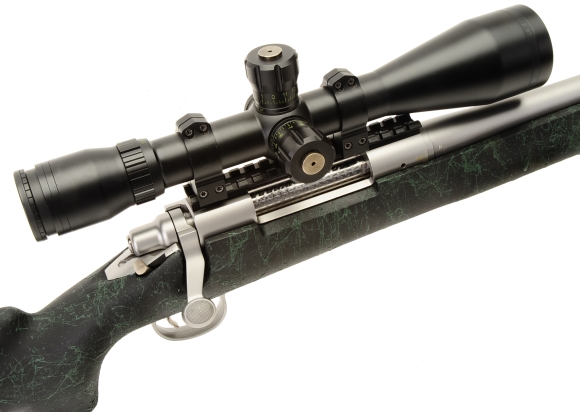
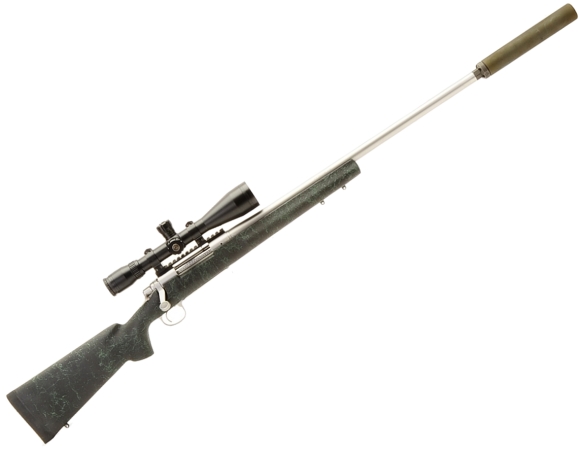
Email Notification